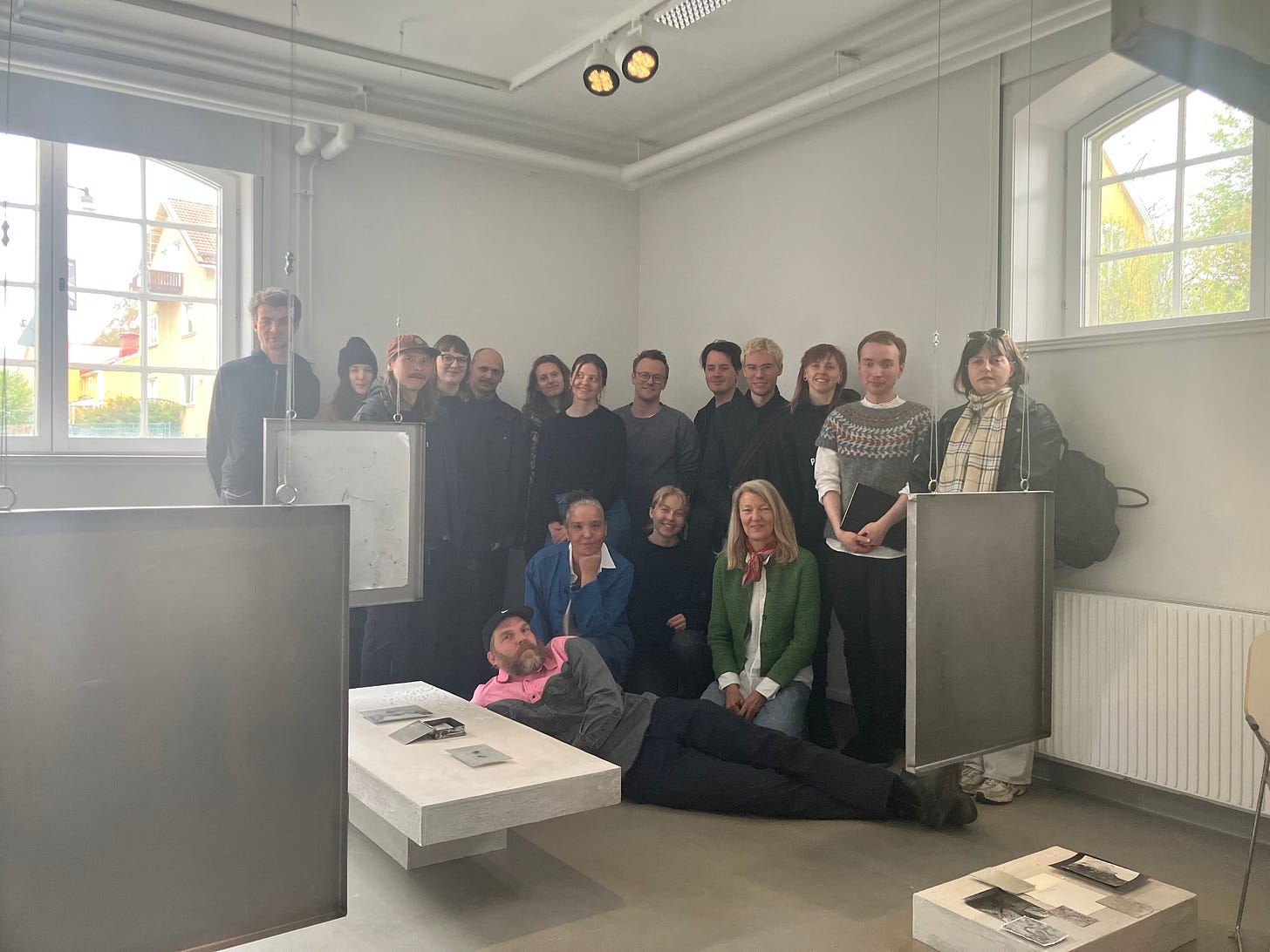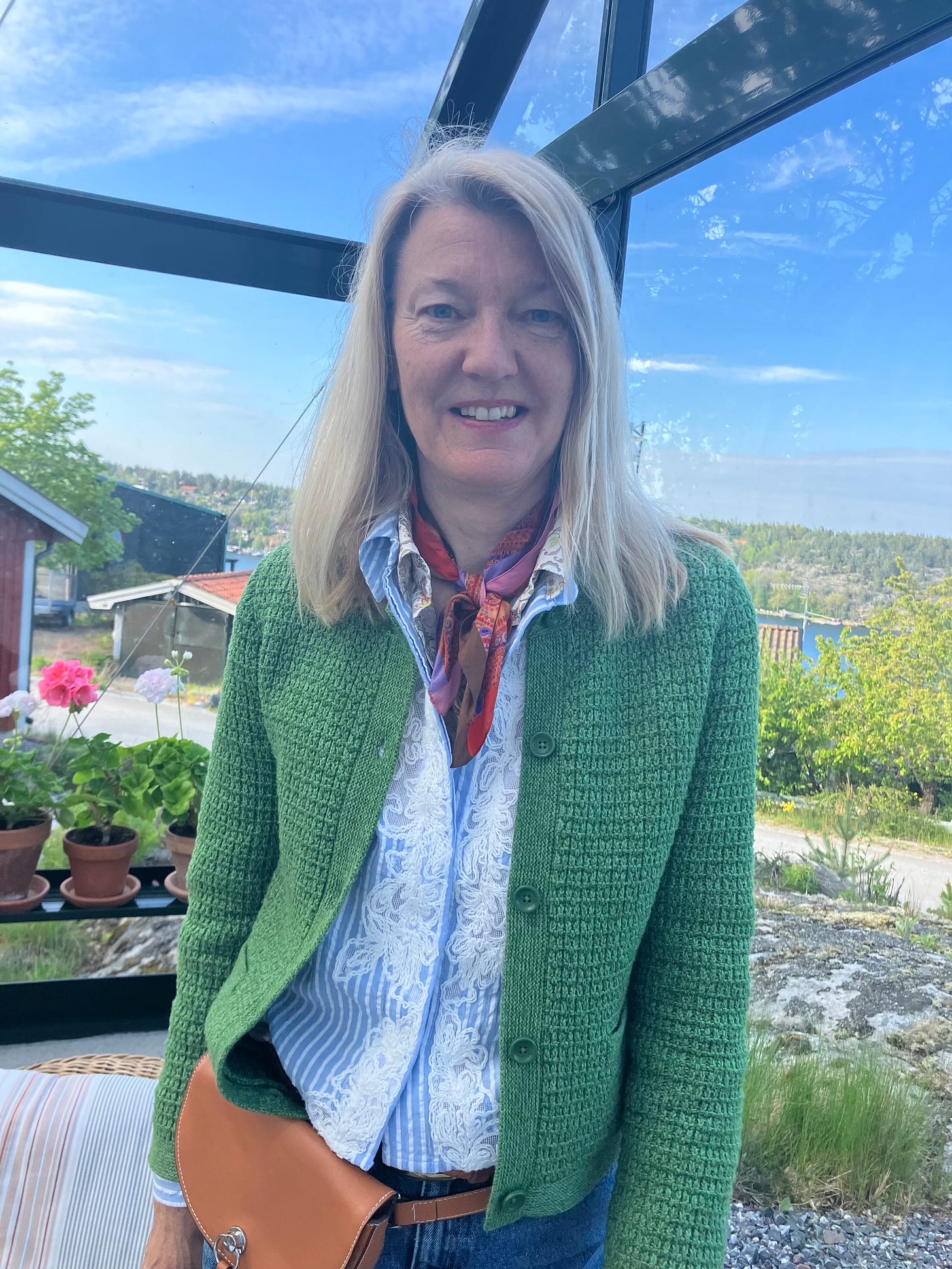We'd like to welcome you to ‘Shortcuts,' our end-of-month 6-question interview on our Substack platform, followed by a six-day daily takeover of our Instagram account by the featured artists and galleries. Please take a moment to click here to subscribe to our Instagram if you haven't already. Now, without further ado, please welcome art teacher and curator Cecilia Andersson and the class of 2025.
Cecilia Andersson, a lecturer at the Umeå Academy of Fine Arts, brings a rich tapestry of international experience to her teaching. With a background in photography from New York, yoga studies in India, and a Master's in curating from Goldsmiths, University of London, she has curated numerous exhibitions and led artistic processes globally for over two decades. Her twenty years of curatorial work in museums and public venues, combined with a passion for artistic dialogue, make her a guiding force for emerging artists at Umeå University.
At Umeå, Cecilia transforms the study of art history into a living, breathing dialogue with the present. By exploring the revolutionary spirit of the Dadaists or the visionary practices of Hilma af Klint, she connects the threads of history to contemporary artistic challenges. Her teaching emphasizes the power of art history to inspire, offering students not just a window into the past, but a framework for envisioning their own futures. In the vibrant, interdisciplinary environment of Umeå University, Cecilia encourages her students to step beyond the familiar, find their unique voices, and create work that resonates with both personal and societal meaning.
Umeå Academy of Fine Arts, part of Umeå University, is known for its focus on individual student needs and its commitment to fostering artistic research and practice. The academy offers a dynamic environment where students are encouraged to engage critically with art history and contemporary theories, reflecting the institution's dedication to cultivating thoughtful and innovative artists.
How do you see the study of art history influencing and enriching your students' creative processes and artistic expression?
I try to frame particular parts of art history within the context of contemporary society. In this regard, I believe that art history has the capacity to expand knowledge. Not only does it provide insight into our thoughts, but it also positions students within a specific framework, a perspective through which to view the past and possibly create visions of ways forward. Basically to serve as a guide in life. I really thrive on this perspective myself and believe it carries us into a relatable and informed future.
For instance, when speaking about Goya, it’s in reference to memory, to an artist whose work bear witness to the current circumstances in society. Or the movement of the Dadaists, whose works responded to WWI and specific and difficult circumstances at that time. Not to mention Hilma af Klint and the specific historic contexts that fed her and other women artists then. Personally, I’m interested in ideas about what shapes our own minds and imagination and refer to this as something very alive and that we are immersed in throughout our lives.
Does this course connect to a larger collaborative project or shared theme that brings it to life?
The course I’m teaching is really in dialogue with what’s at task at the moment. My class takes form daily and very much in response to the demands of the class. Or at least that’s how I’d like to think about it, that I’m sensitive to what the class may need at the time. I see my teaching as a form of tuning in to current events, politics, values, and dimensions as they appear in society. I believe this is what contemporary art making is all about: grasping moments of connection, trust, perhaps even justice and truth.
What is the best advice you can give to students about to graduate from art school?
I’m all for authenticity. If you have something that resonates within you, you are also better equipped to articulate and express it. I believe in searching for an inner guidance and developing ideas and realizing projects from that inner point. Perhaps even to find and explore your own essence, your own point of departure, and to thoroughly proceed from there. If you as a creative person can connect to that which really fascinates you, I believe you will learn to walk that walk, talk that talk, and drive your curiosity forward.
After graduation, you come into the ‘real’ world, so to speak. There’s no longer the everyday routine of being in a somewhat protected environment where people have similar ideas and struggles. My advice is also to stay in touch with people you feel connected to and have good dialogues with in order to feed your own sense of belonging in the (art) world. For instance, setting up shared studios, creating collective activities, responding to open calls, making publications, arranging exhibitions, and all sorts of events happen. This also constantly feeds a network while at the same time exploring what works and what doesn’t. But also, go see many exhibitions!
Are there any women artists you particularly enjoy introducing to your students?
Yes, quite a few, certainly since history proves it's been extraordinarily difficult for women to claim their rightful position. And these difficulties are still in place, I’d say. Without forgetting that each and every artist needs to anchor an individual practice in that which creates meaning for herself, I often refer to the works of, for instance, Hannah Höch, Monica Sjöö, and again Hilma af Klint as representatives for a specific practice that reflects a specific political point in time. Even further back to Hildegard von Bingen as an example of someone who seemingly fearlessly explored practices across a wide spectrum and range of practices. For women it’s always about pushing against societal expectations of what women can or can not do. I find it fascinating to observe current fe/male artistic practices that explore connections to power, a kind of Mother Earthly power, via, for instance, the figure of a priestess, a witch, or a goddess. This often performative practice reconnects us to something essential in times of turbulence and pays homage to some kind of essential sense or desire of belonging.
How do you inspire students to find their own voice in their artistic practice?
This is basically what I emphasize. Without a voice of your own, there’s nowhere to go in the very competitive field of art today. I think of it as a kind of drive that must come from within, and I hesitate to use the word inspiration. I believe inspiration is a romanticized idea of the process required to make art, and rather that it’s a certain life required to make art. A dedicated and in some ways rigorous life where much, perhaps most of it, revolves around practice. In order to find such dedication or drive, I encourage the palpable, what is already there. This may take the form of a specific interest, dedication, talent, motivation, or desire. As long as there is a starting point for something to be initiated and to latch onto, I try to encourage and strengthen that at its core. It’s like building up a narration around your own practice, perhaps even including your own personal identity as an artist. It doesn’t have to be linear by any means, but to anchor that which drives the practice in some direction and provides it deep meaning.
How do I do this? Well, it’s a kind of collaborative process between me and the student that takes form by talking and looking together, where I suggest reading and other artists’ works, but I may also challenge certain beliefs held by the student about restricted capabilities and how to grant access to voices and powers. I do my best to encourage them, and while still held within the framework of the school, to step out of the comfortable into something less comfortable, even unknown.
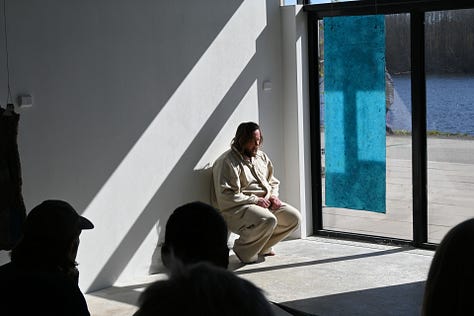

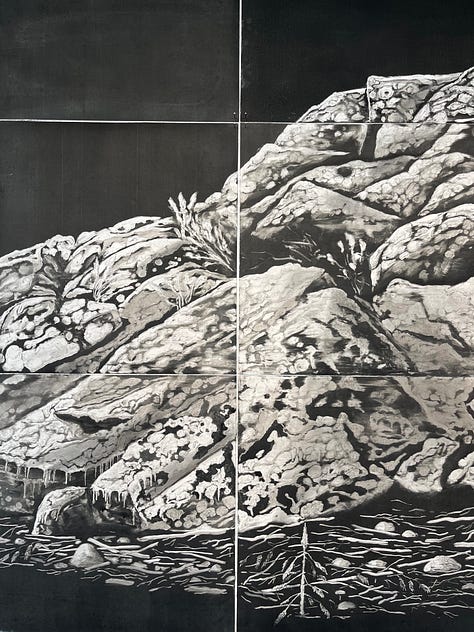
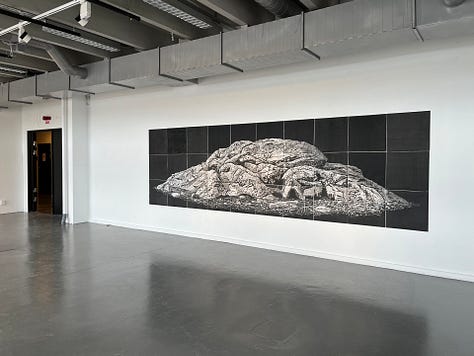
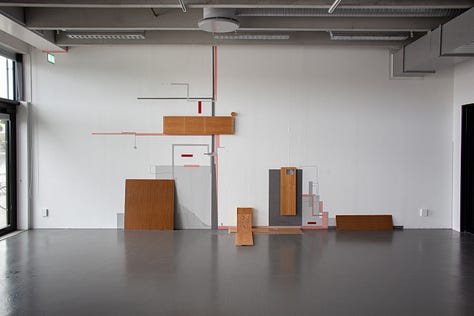

For more about Class 2025, check out our Instapages! This week, Cecilia Andersson will take over our Instagram to introduce the students and share their creative journeys. Don’t miss it!




